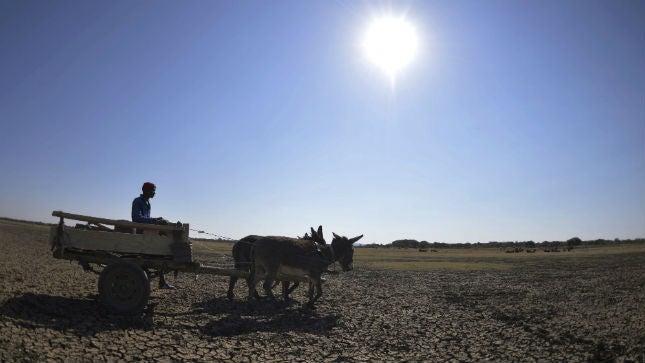
Some 500 million people across 19 African nations remain water insecure, according to the first-ever United Nations assessment of water security across the continent.
The assessment, released on Monday, indicated that apart from Egypt, all countries in Africa had water security scores below 70 – on a security scale of 0 to 100 – while only 13 of the 54 nations reached a modest level of security in recent years. Nineteen African nations had water security levels below the U.N.’s threshold of 45, with Somalia, Chad and Niger faring the worst, according to the report, published on the eve of World Water Day, by the U.N. University’s Canada-based Institute for Water Environment and Health.
Despite having made commitments regarding water security improvements as part of the U.N.’s Sustainable Development Goals in 2015, just 29 African nations have made some progress over the past three to five years, while 25 have made none at all, the authors found.
The U.N. defines water security as a population’s capacity to ensure access to sufficient amounts of water deemed suitable “for sustaining livelihoods, human well-being, and socio-economic development, for ensuring protection against water-borne pollution and water-related disasters, and for preserving ecosystems in a climate of peace and political stability.”
“Overall levels of water security in Africa are low,” lead author Grace Oluwasanya, a water scientist at the Institute, said in a statement. “Not a single country let alone a subregion have at present achieved a state that can be seen as ‘model’ or even ‘effective’ stage of water security.”
While the authors acknowledged that the assessment’s conclusions are limited due to the “very poor” data availability on water security-related issues, like access to drinking water and sanitation, they said that the provides some “preliminary but obvious conclusions.”
The countries identified as doing the best thus far were Egypt, Botswana, Gabon, Mauritius and Tunisia, but even these nations only achieved modest absolute levels of water security, the authors warned.
To draw their conclusions, the authors relied on 10 indicators to quantify the water security data, according to the report.
The first of these indicators was access to drinking water, which ranged from 99 percent tin Egypt to 37 percent in the Central African Republic. The continent’s average basic drinking water service is 71 percent, which leaves “behind some 29 percent of the total population,” or 353 million people, the authors found.
The second indicator was access to sanitation, for which Seychelles scored the best at 100 percent and Chad and Ethiopia were most challenged, with under 20 percent access.
Third was access to hygiene, such as handwashing, which was greatest in the North African region – an average of 67 percent – and worst in West Africa, where Rwanda and Liberia had less than 10 percent access and where Chad and the Central African Republic suffered from the highest diarrhea-related deaths, according to the report.
A fourth indicator was per capita water available, which in general was the highest in Central Africa, while half of North African countries were deemed “absolutely water scarce.” West, Central and Southern African countries were also experiencing a decline in water availability, due to their population growth, the authors found.
Water use efficiency – lowest in North Africa and highest in Central Africa – was the fifth indicator, with improvements in Africa as a whole occurring largely due to initiatives in Tunisia, Gambia, Burkina Faso, Rwanda and Uganda.
The sixth indicator was water infrastructure, which the authors deemed best in the Southern Africa sub-region, and worst in East Africa. Average water storage capacity rose by only 3 percent across the entire continent over the past five years, according to the report.
Wastewater treatment, the seventh indicator, was the best in North African countries and lowest in East and West Africa, where 12 countries in each region treat less than 5 percent of their wastewater, the authors found.
The eighth indicator, water governance, was most advanced in the North and Southern Africa sub-regions and least developed in Central Africa. On an individual country level, Ghana made a significant improvement in the past two years, while Liberia, Guinea-Bissau and Comoros were the lowest performing countries, according to authors, who cautioned that data available was limited.
Disaster risk, the ninth indicator, either remained unchanged or increased throughout the continent, while Cape Verde, Djibouti and Comoros showed the most such risk, the authors found.
The 10th and final indicator, which explored dependency on neighbors for water and water source variability, identified Egypt as the most water-dependent country in Africa, while the Southern Africa sub-region has the greatest variety of water resources.
Oluwasanya, the lead author, added that “data availability – or the lack of it – in itself may be an excellent indicator of water security.”
“Action needs to be taken immediately by national governments with support from international agents to radically improve data collection efforts for Africa,” she said.




